This article relies largely or entirely on a single source .(May 2023) |

Jawdar ben Abdellah was a Moroccan diplomat who served as an ambassador to England, succeeding Abd el-Ouahed ben Messaoud.
This article relies largely or entirely on a single source .(May 2023) |

Jawdar ben Abdellah was a Moroccan diplomat who served as an ambassador to England, succeeding Abd el-Ouahed ben Messaoud.
According to an American historian, John Bulter, Jawdar was a military figure of Portuguese descent. [1]
Jawdar was appointed by Mohammed esh-Sheikh es-Seghir. [1] In 1637, he met with King Charles I to secure an agreement supporting the beleaguered dynasty. [1]
Amid internal strife, Mohammed esh-Sheikh es-Seghir relied on Jawdar to persuade King Charles I to aid the struggling sultanate against its adversaries. [1] In England, Jawdar successfully negotiated a treaty with King Charles I, prohibiting English trade with Agadir, Essaouira, and Massa, which were not under Saadi control. [1] In signing the agreement, King Charles I pledged to supply the sultan with battleships as required. [1]

The Wattasid dynasty was a ruling dynasty of Morocco. Like the Marinid dynasty, its rulers were of Zenata Berber descent. The two families were related, and the Marinids recruited many viziers from the Wattasids. These viziers assumed the powers of the Sultans, seizing control of the Marinid dynasty's realm when the last Marinid, Abu Muhammad Abd al-Haqq, who had massacred many of the Wattasids in 1459, was murdered during a popular revolt in Fez in 1465.

Abū 'Abdullah Muḥammad ibn Sulaymān ibn Abū Bakr al-Jazūli al-Simlālī, often known as Imam al-Jazuli or Sheikh Jazuli, was a Moroccan Sufi Saint. He is best known for compiling the Dala'il al-Khayrat, an extremely popular Muslim prayer book. This book is usually divided into 7 sections for each day of the week. Al-Jazuli is one of the seven saints of Marrakesh and is buried in his mausoleum inside the city.
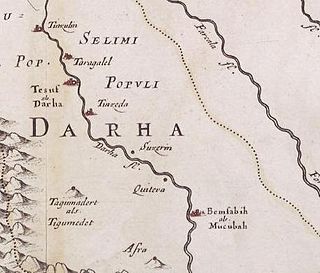
Tagmadert is a city in the Draa River valley in Morocco. It is the place of origin of the members of the Saadi Dynasty. Despite the fact that Tagmadert is indicated on most older European maps, there is some uncertainty about its exact location. According to Charles de Foucauld its location was identical to present-day Fezouata, the district directly north of the Ktawa, including the village of Tamegroute. There is a description of Tagmadert by the 17th century traveller Marmol. The name seems to have referred to both a district and a town.
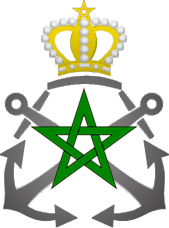
The Royal Navy of Morocco is a branch of the military of Morocco responsible for conducting naval operations. The Royal Moroccan Navy is administratively managed by the Administration of Defence, which is commanded by King Mohammed VI, the commander-in-chief of the Moroccan Armed Forces.
The military history of Morocco covers a vast time period and complex events. It interacts with multiple military events in a vast area containing North Africa and the Iberian peninsula.
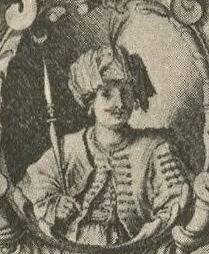
Mohammed esh Sheikh es Seghir was the sultan of Morocco from under the Saadi dynasty.

The Anglo-Moroccan alliance was established at the end of the 16th century and the early 17th century between the kingdoms of England and Morocco. Commercial agreements had been reached by Queen Elizabeth I of England and the Moroccan Sultan Ahmad al-Mansur on the basis of a common enmity to Philip II of Spain. The arms trade dominated the exchange, and numerous attempts at direct military collaboration were also made.

Moroccan–Portuguese conflicts refer to a series of battles between Morocco and Portugal throughout history including Battle of Tangier, Fall of Agadir and other battles and sieges in the Moroccan coast.

Morocco–Netherlands relations the Morocco–Netherlands relations refers to relations between the Moroccans people and the Dutch people of the Kingdom of the Netherlands which span a period from the 16th century since the Dutch Revolt period and era of Dutch Empire and Dutch Republic to the present. The relations of friendship historical and common historical alliance between the Moroccan people and the Dutch people It is an old friendship were strengthened during the reign of William the Silent and Maurice of Orange the founding father of the dynasty House of Nassau the House of Orange-Nassau and the Kingdom of the Netherlands. also the Dutch-Moroccans is the third largest ethnic group in the country. Morocco is represented in the Netherlands by an embassy in The Hague, as well as four consulates-general in Amsterdam, Rotterdam, 's-Hertogenbosch, and Utrecht. The Netherlands is represented in Morocco by an embassy in Rabat and a consulate-general in Casablanca.
Al Walid ben Zidan, also known as Mulay al-Walid was the Sultan of Morocco from 1631 to 1636.
Sidi M'Hamed al-Ayachi, also el-Ayachi or al-Ayashi, was a Moroccan marabout, warlord, and jihadist. The Sultan of Morocco, Mulay Zidan al-Nasir, had made him governor (qā′id) of Azmūr, but in 1627 he decided to secede and created his own state.

Morocco–Portugal relations cover a period of several centuries largely historic, and to present not particularly substantial relations. Initial contacts started in the 8th century, when Muslim forces invaded most of the territory of the Iberian peninsula. After the Reconquista, Portugal would then expand into Africa, starting with the territory of Morocco, by invading cities and establishing fortified outposts along the Moroccan coast.
Adriaen Matham was a Dutch Golden Age painter, engraver and art dealer. He was part of an embassy to the Saadi dynasty of Morocco and also made some engravings while there. He married three times, once in Amsterdam and later lived in The Hague in the 1650s before his death.

Antonius de Liedekerke, also Antonie Charles de Liedekercke (1587–1661) was a Dutch sea captain and ambassador to the court of the king of Morocco Mohammed esh Sheikh es Seghir in the 17th century.

Turkey–Morocco relations are the foreign relations between Morocco and Turkey, and spanned a period of several centuries, from the early 16th century when the Ottoman Empire neighbored Morocco to until modern times.
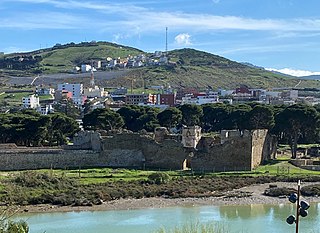
Ksar es-Seghir, also known by numerous other spellings and names, is a small town on the Mediterranean coast in the Jebala region of northwest Morocco, between Tangier and Ceuta, on the right bank of the river of the same name. Administratively, it belongs to Fahs-Anjra Province and the region of Tanger-Tetouan-Al Hoceima. By the census of 2004, it had a population of 10,995 inhabitants.
The Zaydani Library or the Zaydani Collection is a collection of manuscripts originally belonging to Sultan Zaydan Bin Ahmed that were taken by Spanish privateers in Atlantic waters off the coast of Morocco in 1612. The collection is held to this day in the library of El Escorial.
The Conquest of Fez or Capture of Fez took place in 1554 between the Algerian forces of Salah Rais and the ruler of the Saadi Sultanate, Mohammed ash-Sheikh. The battle took place on 7 January at Qudyat-al-Mahali, a suburb near Fez and occurred after Salah Reis’ two previous victories against the Saadians, one at Taza and another at the Sebou river.
Ahmad al-Abbas was the last Sultan of the Saadi dynasty in present-day Morocco. He was proclaimed Sultan in Marrakesh in the year H.1064 after the death of his father, Mohammed esh-Sheikh es-Seghir. In 1659, he was assassinated by his maternal uncle, Abdul Karim Abu Bakr Al-Shabani. His uncle assumed power as Sultan in Marrakesh until 1667 when he was in turn murdered, it happened shortly before the Alaouite Sultan Moulay Al-Rashid conquered the city in 1668.
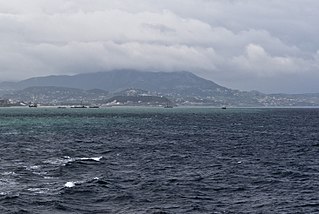
The Portuguese conquest of Ksar es-Seghir in modern Morocco from the Marinid dynasty took place between 23 and 24 October 1458 by Portuguese forces under the command of King Afonso V, surnamed the African.